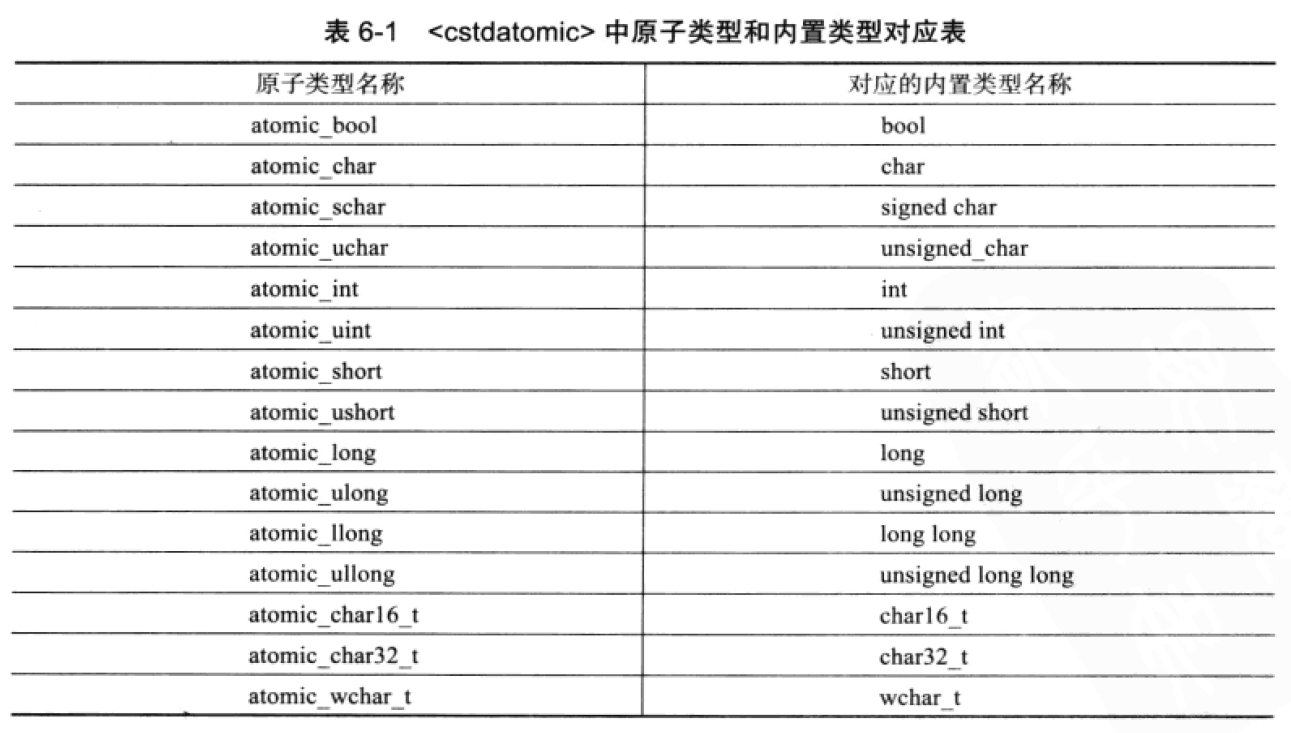原子操作和原子类型
通常情况下,原子操作是通过互斥(mutual exclusive)的访问来保证的。
Linux下借助POSIX标准的pthread库的互斥锁:
#include <iostream>
#include <pthread.h>
using namespace std;
static long long total = 0;
pthread_mutex_t m = PTHREAD_MUTEX_INITIALIZER;
void* func(void *)
{
for (long long i = 0; i < 100000000LL; ++i)
{
pthread_mutex_lock(&m);
total += i;
pthread_mutex_unlock(&m);
}
}
int main()
{
pthread_t t1;
pthread_t t2;
if (pthread_create(&t1, NULL, &func, NULL))
{
throw;
}
if (pthread_create(&t2, NULL, &func, NULL))
{
throw;
}
pthread_join(t1, NULL);
pthread_join(t2, NULL);
cout << total << endl; // 9999999900000000
return 0;
}上面代码为共享变量创建互斥锁(m),并在进入临界区前后进行加锁(pthread_mutex_lock)和解锁(pthread_mutex_unlock),从而保证累加的代码为原子操作。但这样对互斥锁的管理无疑是种负担,而在C++11中不需要如此麻烦:
#include <iostream>
#include <atomic>
#include <thread>
using namespace std;
atomic_llong total {0}; // 原子数据类型
void func(int x)
{
cout << x << endl;
for (long long i = 0; i < 100000000LL; ++i)
{
total += i;
}
}
int main()
{
thread t1(func, 0);
thread t2(func, 3);
t1.join();
t2.join();
cout << total << endl; // 9999999900000000
return 0;
}原子数据类型在线程间被互斥地访问。相比pthread的实现,同步的是数据而不是代码,遵从了面向对象的思想。

除了使用上图中的已经定义好的原子类型,我们还可以使用atomic类模板,通过std::atomic<T> t;能定义出任意的原子类型。编译器会保证产生并发情况下行为良好的代码,以避免线程间对数据t的竞争。






















 1146
1146

 被折叠的 条评论
为什么被折叠?
被折叠的 条评论
为什么被折叠?








